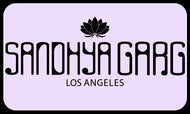SANTA FE, NEW MEXICO - THE LAND OF ENDLESS SUNSETS
Santa Fe, New Mexico’s capital, sits in the Sangre de Cristo foothills. It’s renowned for its Pueblo-style architecture and as a creative arts hotbed. Santa Fe embodies a rich history, melding Hispanic, Anglo and Native American cultures whose influences are apparent in everything from the architecture, the food, and the art. Remember, we're seated at an elevation of 7,000 feet, so come and partake of 320 sunny days per year. Founded as a Spanish colony in 1610, it has at its heart the traditional Plaza. The surrounding historic district’s crooked streets wind past adobe landmarks including the Palace of the Governors, now home to the New Mexico History Museum.
The city stands behind you, a geometric mass of old and new coming together.
Modern architecture contrasting with the traditional adobe style house that has been built in this area for over 400 years. Santa Fe has long been a center for arts and culture; Santa Fe is one of the country's largest art markets. You'll find nearly 250 galleries and dealers to explore. Santa Fe has more than a dozen museums to explore featuring culture, history and traditions of this region and the world. This is Santa Fe, New Mexico, home to over 83,000 people and tourist attraction to thousands more each year who come to marvel at the beauty of the city and the land around it.


Before you lie the drylands that surround Santa Fe, a vast expanse of desert that flows out from the city, becoming hills and mountains on the horizon. Upon first glance, this landscape appears simple and solid, stretching out before you. Part of the flavor of the City Different is its distinctive neighborhoods. There’s the sedate and leafy Historic District, with the old charm of the Plaza, great retail and fabulous museums; colorful Canyon Road, lined with inviting galleries; the Rail yard and Guadalupe Districts, which blends contemporary visual and performing arts; the buzzing Midtown, melding art and technology; and the growing residential Southside, a shopping and dining corridor in close proximity to some of Santa Fe’s most beloved natural areas. But the beauty and mystery of deserts comes out of its secrets and the openness that encapsulates them. So much is different in the "City Different". You must be careful when visiting for staring open mouthed at the beauty for too long may lead to you never wanting to leave. It is an enigma that is hard to comprehend as it combines endlessness with openness with intensity and the constant feeling that what is before you may be real and may be simply a mirage.
Native American Culture
More than 20 percent of Native Americans in the United States live in the American Southwest, especially in the present-day states of New Mexico and Arizona. New Mexico is home to 23 Tribes, Nations and Pueblos: 19 Pueblos, the Jicarilla Apache Nation, the Mescalero Apache Tribe, the Fort Sill Apache Tribe, and the Navajo Nation that crosses over into Arizona and Utah, and is the largest in terms of land base and population. Each tribe is a sovereign nation with its own rules, regulations, language, governing structure, customs, and both political and religious leaders.
Santa Fe Architecture
No other city in the country has so many low-slung, earth-colored buildings made of adobe bricks, which consist of a mixture of sun-dried earth and straw. Santa Fe has a distinctive architectural style all its own. Walking confidently across the landscape you can hear the light crunch of your boots against the dirt under your feet, the orange and brown earth below and the brilliant blue sky above. It is a sharp contrast that creates part of the awe-inspiring nature of the open desert. The fiery ground and azure atmosphere create a distinct line between earth and sky.
And though it seems as though adobe dominates the city, there's a surprising diversity of building materials and architectural styles on display, including examples of Victorian, Italianate and California Mission Revival styles. In recent years, modern architects have begun to blend elements of historic architectural styles with contemporary designs, creating a sleek new look for Santa Fe in the 21st century. Looking up you can see big, puffy, white clouds drifting lazily across the sky. Occasionally one will obscure the bright sun sending a momentary respite of shadow over the landscape. Soon it passes on, and the warm rays of the sun come back to tickle and sizzle your skin. Looking back at the land before you the auburn sand is interrupted by speckles of green that are the cactuses and brush that thrive in the intensity of the desert. Each in their own way of reaching up towards the sky
Santa Fe's unique architecture is one of the reasons for the immense popularity of this capital city, which is surrounded by majestic mountains with gentle slopes that resemble the soft curves of adobe walls. Explore the meandering streets of downtown and nearby residential neighborhoods to discover hundreds of historic adobe homes, built primarily in the Spanish Pueblo and Territorial styles. These architectural styles are rooted in ancient history and protected by city laws ensuring that new construction situated in core historic districts fits with the old.


Pueblo Style
Santa Fe's historic adobe architecture evolved from early Native American dwellings that impressed the Spanish when they first arrived in the region in the 16th century. They found Pueblo Indians in the Rio Grande Valley living in communal houses with hundreds of rooms, often four or five stories high, accommodating thousands of people.
The Spanish, who called these communities "pueblos" (the Spanish term for villages), saw how the Pueblo people built their shelters as a series of rooms surrounding a central plaza, with earth floors and flat roofs held up by pine logs, or vigas. These beams were covered diagonally or at right angles with small poles, or latillas. The Pueblo Indians built their homes using wood, stone and puddled adobe, a laborious method of molding adobe walls by hand then laying them in low bands to dry before adding the next layer. As the Spanish settlers established communities in the region, they sought to improve the Pueblo construction methods using adobe. After all, the essential materials—mud, earth and straw—were plentiful and readily available. But to streamline the construction process, they designed wood molds to shape uniform adobe bricks.
Turquoise Trail and Madrid
From Santa Fe, drive south on NM 14, known as the Turquoise Trail. A National Scenic Byway, this trail takes its name from the gemstone that Indians, then Spaniards, Mexicans and Americans mined in this region for centuries Along the Turquoise Trail, you can explore unique towns, offering restaurants, shops, lodging, artists' studios, galleries and museums. Prehistoric peoples made their homes here. Spanish missionaries explored the area and battles were fought over this land. Outlaws and Confederate soldiers camped in the area. And Kit Carson marched Navajo people along the Trail in their "Long Walk"? to incarceration at Fort Sumner. Mines were dug in the mining districts for native copper, lead, iron, gold and turquoise.
Scenic views, diverse cultures, extensive history and great outdoor opportunities continue to entice visitors to journey down the beautiful Turquoise Trail today.The different succulents have exceptional patterns across their skin. Curving engraved lines that stretch across their arms and body, or a series of polka dots created by the protruding spikes, beautiful yet dangerous. Stop first at Cerrillos, once a central part of the Old Spanish Mineral Developments in the Southwest. Turquoise plucked from mines here ended up in Spain's crown jewels. By the 1880s, Cerrillos was a major mining town, producing gold, silver, lead and zinc and enough money to keep 21 saloons and four hotels in business. Today, the small town's dirt streets are lined with historic adobe and western buildings that have served as settings for numerous Western movies. Down the road lies Madrid, once a booming coal-mining town famous for its Christmas light displays and minor league baseball games held in the first lighted stadium in the West. After coal use declined, Madrid became a ghost town until the 1970s, when artists revived it with galleries, studios, restaurants, music concerts and even the annual holiday light display.
Continue south on NM 14 to the tiny town of Golden, established in 1825 during the first gold rush west of the Mississippi. Start your ascent into the Sandia Mountains at San Antonito, where NM 536 takes you up Sandia Crest. At an elevation of 10,678 feet, you'll get some jaw-dropping views of Albuquerque and the Rio Grande Valley. Drive back down and visit Tinkertown Museum, filled with hand-carved miniature figures and wacky Western memorabilia. Then follow NM 14 south to I-40 and drive east to NM 41. Head north on NM 41 to Galisteo, an historic adobe town populated largely by artists. Follow NM 41 to 285 near Lamy. Take 285 north to I-25 south to return to Santa Fe.
Popping out from the tops of these plants are little flowers of pink and purple and yellow, bright against their green backdrops. These flowers reflect the colors that burst in the sky as the sun sets at night, the orange of the earth mixing until the entire desert becomes a blooming painted sunset, the land turning a soft shade of pink. The slowly moving sun causes the plants to casts shadows into the dirt that elongate and dramatize their unique shapes creating strange monsters in the sand.

Georgia O'Keeffe Museum
The Georgia O'Keeffe Museum is located in downtown Santa Fe within easy walking distance of the historic Plaza. The Museum collection is the single largest repository of O'Keeffe's work in the world. Georgia O’Keeffe is one of the most significant artists of the 20th century, renowned for her contribution to modern art.Born on November 15, 1887, the second of seven children, Georgia Totto O’Keeffe grew up on a farm near Sun Prairie, Wisconsin. By the time she graduated from high school in 1905, O’Keeffe had determined to make her way as an artist.
She studied at the Art Institute of Chicago and the Art Students League in New York, where she learned the techniques of traditional painting. The direction of her artistic practice shifted dramatically four years later when she studied the revolutionary ideas of Arthur Wesley Dow. Dow offered O’Keeffe an alternative to established ways of thinking about art. She experimented with abstraction for two years while she taught art in West Texas. Through a series of abstract charcoal drawings, she developed a personal language to better express her feelings and ideas.
O’Keeffe mailed some of these highly abstract drawings to a friend in New York City. Her friend showed them to Alfred Stieglitz, the art dealer and renowned photographer, who would eventually become O’Keeffe’s husband. He became the first to exhibit her work, in 1916. By the mid-1920s, O’Keeffe was recognized as one of America’s most important and successful artists, known for her paintings of New York skyscrapers—an essentially American symbol of modernity—as well as her equally radical depictions of flowers.
In the summer of 1929, O’Keeffe made the first of many trips to northern New Mexico. The stark landscape and Native American and Hispanic cultures of the region inspired a new direction in O’Keeffe’s art. For the next two decades she spent most summers living and working in New Mexico. She made the state her permanent home in 1949, three years after Stieglitz’s death.
O’Keeffe’s New Mexico paintings coincided with a growing interest in regional scenes by American Modernists seeking a distinctive view of the nation.In the 1950s, O’Keeffe began to travel internationally. She painted and sketched works that evoke the spectacular places she visited, including the mountain peaks of Peru and Japan’s Mount Fuji. At the age of seventy-three, she took on a new subject: aerial views of clouds and sky.Suffering from macular degeneration and failing vision, O’Keeffe painted her last unassisted oil painting in 1972. However, O’Keeffe’s will to create did not diminish with her eyesight. In 1977, at age ninety, she observed, “I can see what I want to paint. The thing that makes you want to create is still there.”
Walking further into the expanse you might hear a sound, a rustle, and jump, unsure if it is just wind against brush or a nearby snake slithering its way across the ground. The only trace left behind to prove a snake was there is a winding path across the dirt that will soon be blown away. If you should find yourself engaged in a staring contest with a snake it will most likely be a western diamondback rattlesnake or gopher snake, both are masters of disguise, camouflaging into the earth.
If you can tear your eyes away from theirs you will see they are covered in intricate patterns. The geometric scaled designs create stripes, dots, and diamonds that come in an assortment of colors that match the desert. The beautiful repeating patterns blend seamlessly into the rocky and cracked dirt. These magnificent animals slide across the land, moving quickly under the sun, a hidden treasure of the desert.
Walking through this dry land, you never know what you may come across, what patterns you may discover and what life may be blossoming.
This mysterious and beautiful landscape around Santa Fe, New Mexico is the inspirations for artists of all kinds. The desert has a hypnotic capability that enchants and stimulates those that stand amidst it. Fashion designer Sandhya Garg is no exception to this rule and used the imagery and her own imaginings of this landscape to create her collection "Serpiente".
Written by Emerson Craig
Photographs for this blog courtesy Pinterest and google images. Please reach out to us if you are the image owner with the right credits, we will be happy to add them here.
Shop Serpiente Collection, Inspired by Santa Fe
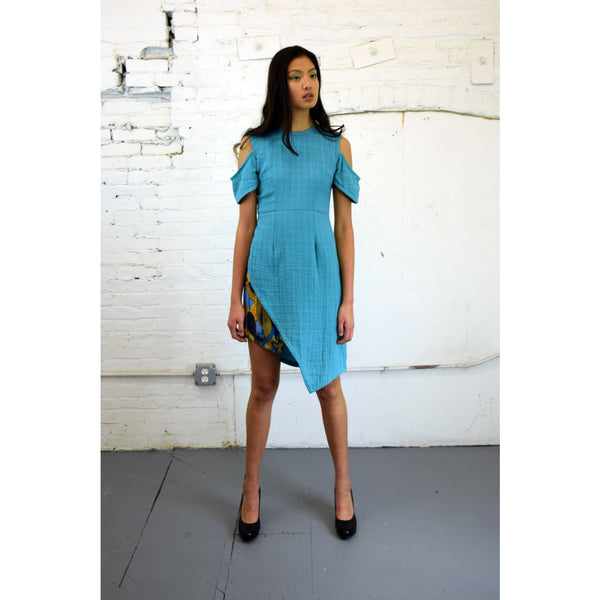
Andy Blue Wrap Dress | Wedding Guest Dress
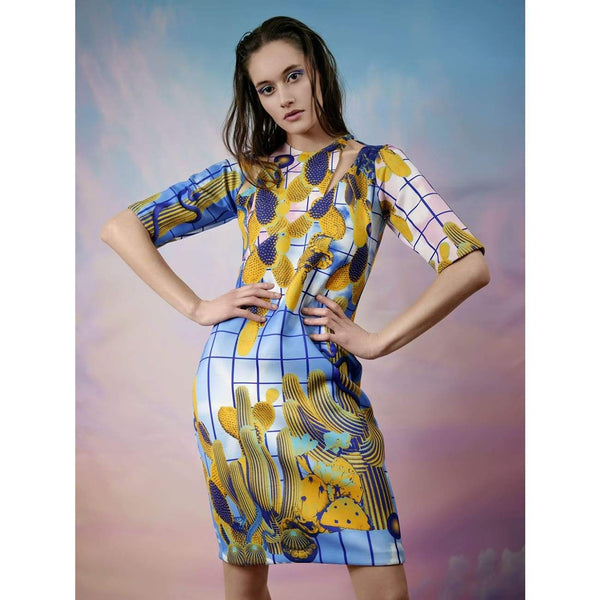
Serena Long sleeve Bodycon Dress
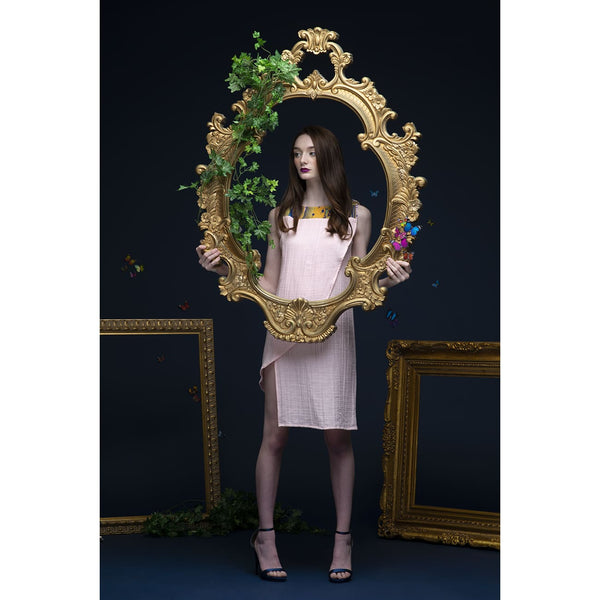
Gulab Tunic Pink Top
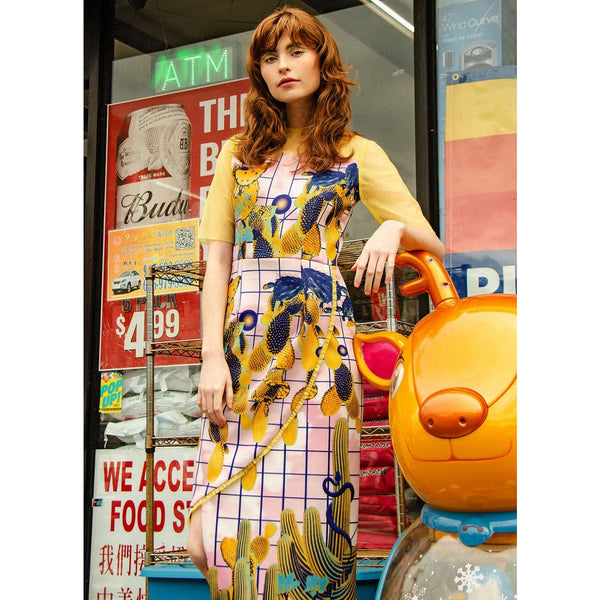
Jaya Pink Wrap Dress

ABOUT THE WRITER
Sandhya Garg is a Project Runway designer. She studied and specialized in women's fashion at London College of Fashion, UK and has worked at Alexander McQueen, Gucci, Liberty London, Alice Temperley to name a few. She has her own successful resort dresses, special occasion dresses, wedding guest looks, swim coverups label.
While on Project Runway Season 13, she won 2 challenges and was fortunate to show her collection at Mercedes-Benz New York Fashion Week. The brand has been featured in Marie Claire US, Ftv.com, Elle Magazine, Cosmopolitan Magazine, Vogue online to name a few.
She designs limited edition high end printed spring dresses and swim coverups. Beautiful prints are inspired from around the world to be worn during travel, resort stay or cruise holidays.
45 Stylish Resort Wear Ideas for Your Next Vacation
Are you ready for your next getaway but unsure what to pack? Resort wear is all about creating fashionable outfits appropriate for a relaxed, vacation setting. From essentials that work...
Read moreWhat is Cruise Elegant Attire
If you want to attend a “cruise elegant” evening, bring a fancier, more formal outfit. Men can wear suits or dress slacks with a sport coat and dress shirt. For women, cocktail dresses, pantsuits...
Read moreCruise Wear for Women
What to Wear on a Luxury Cruise Ship Vacation Luxury cruise dress code- Cruise Chic Cruise wear dress code explained here. Read about what to wear on a luxury cruise...
Read moreHow to look amazing at your next vacation- tips and tricks
Look amazing at your next vacation- Tips and Tricks Vacation Sundresses with Tropical Punch Are you going on vacation to the Caribbean, and looking for a dress that’s fun, tropical and...
Read more